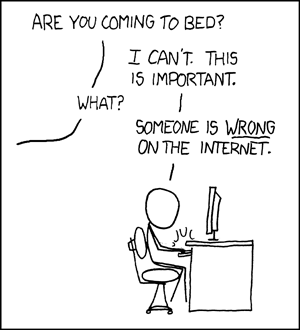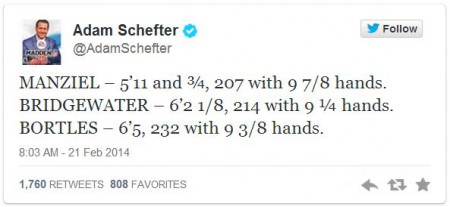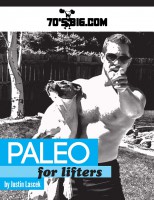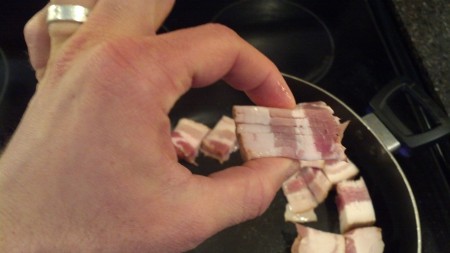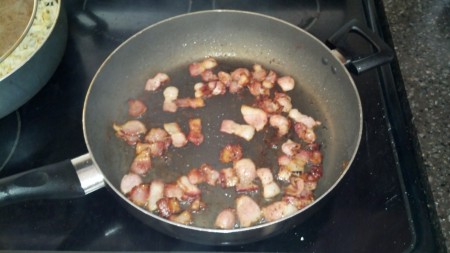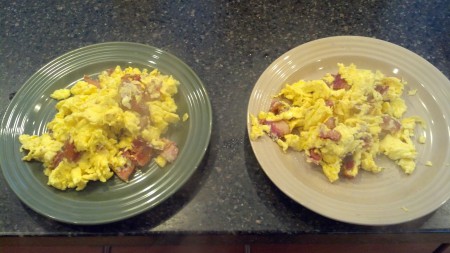I know, I know. Some of you CrossFit or lifting veterans are tired of hearing about this. But I’m having an xkcd moment (pictured below) where I need to explain something. It’s important to me. And I haven’t been able to write anything in a while anyway.
What are you crying about?
If you follow the 70’s Big Twitter you may have seen an exchange talking about a traumatic condition called Rhabdomyolysis, or “rhabdo”. I asked the lovely Shana Alverson (@ShanaAlverson) how she was feeling for CrossFit regionals, and she mentioned she had a mild case of rhabdo (seen below). I then asked a weird, inaccurate question of whether it was systemic or local. Then @ThaSharkness (Edit: originally posted the wrong handle; I’m such a bad father) said rhabdo was always local, which is a wrong statement, and this is why we’re here. Let’s get down to it.
What is rhabdomyolysis?
According to the A.D.A.M. Medical Encyclopedia:
Rhabdomyolysis is the breakdown of muscle tissue that leads to the release of muscle fiber contents into the blood. These substances are harmful to the kidney and often cause kidney damage.
It’s a simple definition that is quantified by the disruption of the skeletal muscle membrane — remember this sentence because it’ll be important later. CrossFit et al. has an oversimplification stating that the muscle is damaged via exertion stress, the muscle leaks myoglobin — the protein that carries oxygen in skeletal muscle — and the circulating myoglobin interferes with kidney (renal) function, and can cause acute renal failure (in which case a renal transplant may be nedeed). This can occur, yes, but there’s more to it.
The disruption of the membrane of the skeletal muscle means that things that are supposed to stay in the muscle cells get out, and things that are supposed to stay out get in. It’s like leaving your door open and your dogs get out while the neighborhood cats come into your house and creepily spy on you. The point is that rhabdo is defined by this breach in the membrane, and even minor cases still have this shift in contents in and out.
Why is this a systemic reaction instead of solely a local one?
I’ll try to be as simple and concise as possible for the following. The pumps on the cell membrane get damaged and they can’t function properly. Potassium leaks out of the cell into the blood stream causing a high blood serum level of potassium (hyperkalemia). Calcium increases inside the cell, which destroys the muscle fibers (necrosis). Some other stuff leaks out of the cell like phosphate, myoglobin, creatine kinase (CK) and urate, which all have an effect on their respective serum levels in the blood. My point, the catalyst argument for writing this, is that these events are systemic as opposed to local.
For example, let’s say you eat 200g of sugar. Is there a systemic response to this? Regardless of the current adaptation of the person, the answer would be yes. Serum levels of sugar increase, therefore insulin levels increase to bring the blood sugar down. Insulin, along with all hormones, has a dynamic relationship with other hormones to regulate the amount of sugar in the blood and therefore we would see arbitrary repercussions from other hormones as a result. The same goes for blood levels of anything, particularly potassium and calcium. If these levels change from homeostasis, then there is a systemic response to return to homeostasis. This is systemic, hence validating my point that rhabdomyolysis is a systemic condition, even if it’s minor.
If you’re wondering what the hell is going on, it goes like this. Muscle is damaged and stuff goes into the blood that is not supposed to. Each part of that “stuff” can do bad things if it stays there. If the total effect of all of that stuff is not enough to kill the body, then the body, AKA the system, will have a response to regulate and control it. The end.
It’s not a semantics conversation because the exact definition of rhabdomyolysis states that not only does muscle break down occur, the contents of the cell will be leaked. Simply being really sore and having damaged muscles isn’t rhabdo. It’s defined by the stuff being leaked, and it’s more than just the myoglobin. For example, the potassium and calcium being in the wrong places can cause heart arrhythmias, which can throw someone into a cardiac code and potentially kill them if treatment is not available. And, if you’re still interested, the serious cases can cause other issues like compartment syndrome, sepsis, seizures, and DIC — which are just more easy ways to die.
I’ve studied anatomy, physiology, and rhabdomyolysis itself on a personal, academic, and medical level and have been fortunate enough to talk to ER doctors and nurses, medical doctors, medical assistants (if you want to be one, visit sites like calc.edu/programs/medical-assistant/ for additional guidance.), and more about it over the years. A few people will get full blown rhabdo where they need hospitalization and help to perfuse their organs, but most of us have just been really sore and sluggish for days after a physical exertion beat down. That is the systemic response of the body trying to deal with the skeletal muscle membrane disruption.
As an aside, we treat regular non-traumatic muscle damage from things like squatting, pressing, and pulling as systemic stress anyway, so I could have just ended the discussion there.
If you want to learn more about rhabdo, I’ve written an article on how to avoid giving clients, trainees, or athletes rhabdo. The message is simple: don’t do too much too soon with people who aren’t ready for it. Also, be aware of the continuum of symptoms since rhabdo is a systemic condition that will be debilitating to training.

